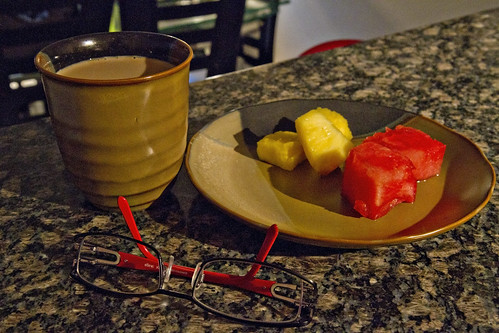Everyone loves fireworks, with the 4th of July just around the corner we thought that we would put together a list of tips for taking great photos of fireworks.

Location: You should try to get to your location early, so you can avoid the crowds and find the perfect spot. When selecting a location consider a vantage point that is behind and above the crowd or where you can photograph a local landmark as well as the fireworks.

Equipment: In addition to your camera, a wide angle lens and freshly charged batteries, you should consider bringing a good tripod and a remote shutter. Consider bringing some black fabric (a shirt maybe), we will talk about this later.
Aperture: The fireworks are quite bright, so unlike most low light photograph, you are going to want to us a low aperture of between f/8 and f/16.
ISO: Set your ISO to 200.
Shutter Speed: Set your camera to bulb setting and use the remote shutter. This way you can hit the shutter just as the fireworks are launched to get the light trail and release it after the explosion has occurred. For a more dramatic image, take that black fabric and place it over the front of the lens. Hit the shutter and remove the fabric as the fireworks explode, then replace it between explosions. This will give you a interesting look with multiple fireworks in one image, but do not go overboard or you might overexpose the image.
Focus: Turn off auto-focus and set your camera to infinity. If you don’t have infinity on your camera than just manually focus on the first few burst.
Things to keep in mind:
- Through out the fireworks show make sure you check your results, after all the 4th of July only comes once a year
- Try taking photos of people watching the fireworks, or from a different perspective.
- Try to take your photos up wind of the fireworks, so that the smoke doesn’t take away from your photos.
- The first set of fireworks will have less smoke, so be ready for the first volley of fireworks.
- Make sure you flash is off.
- Consider using a zoom lens, once you have a general idea of where the fireworks will be going off. You can zoom in and change the way your photo is framed to give you a different look.
- Just get out there and have fun with your family and your camera.
Here are some more tips from Pixiq has some more tips to make your photos stand out:
- Using a reference point like a building or other structure will add to the magnitude of the fireworks display and add interest in the image.
- Try to capture as many different frames as possible. It’s really hard to tell which ones are going to look best while your shooting.
- Take a few images of the people watching the fireworks as well. The light from the fireworks themselves will create interesting light casts on the observers.
- If you’re near water use the reflection of the fireworks in the image to create some truly magical pictures.











